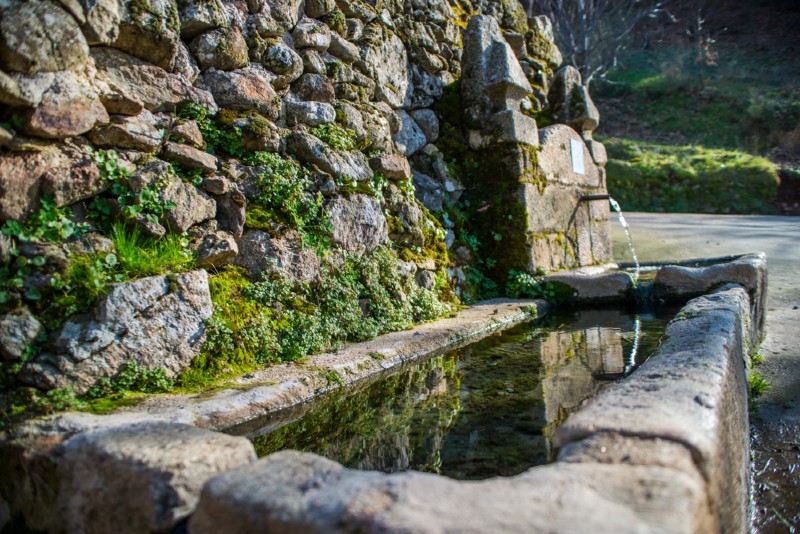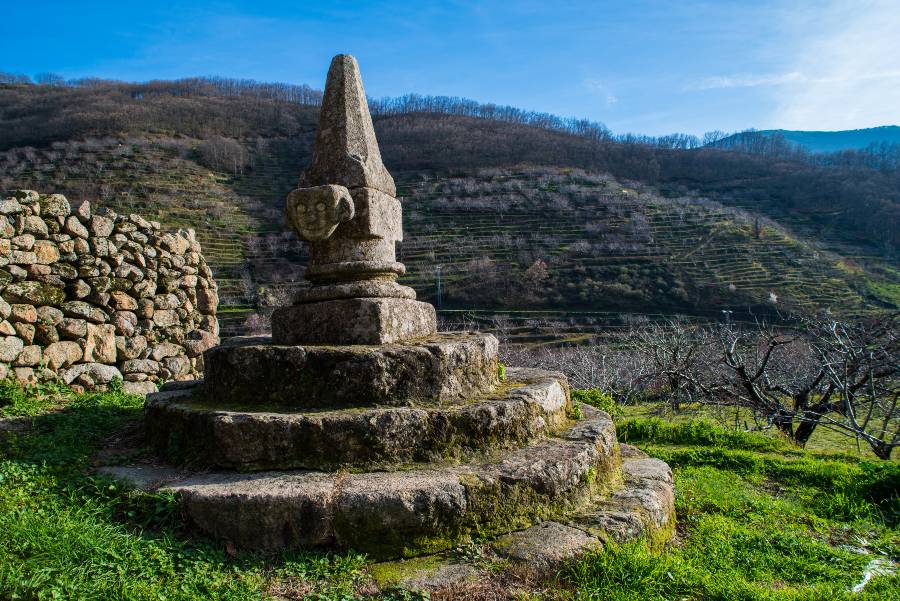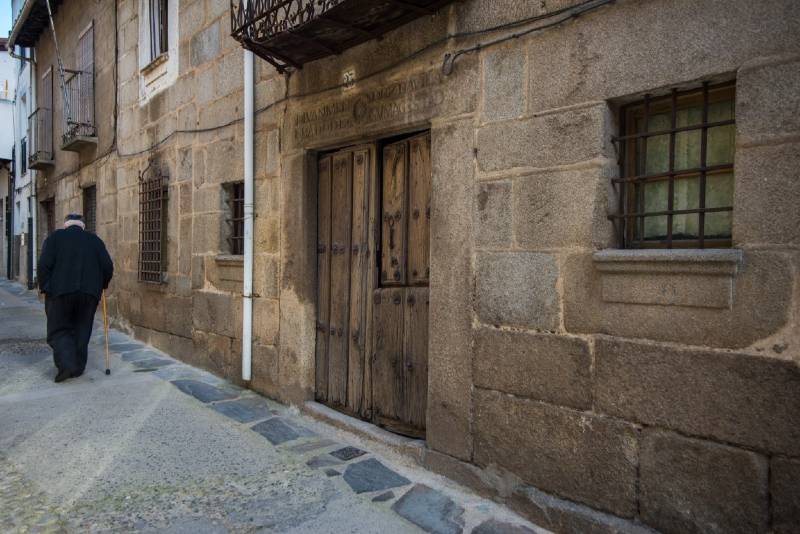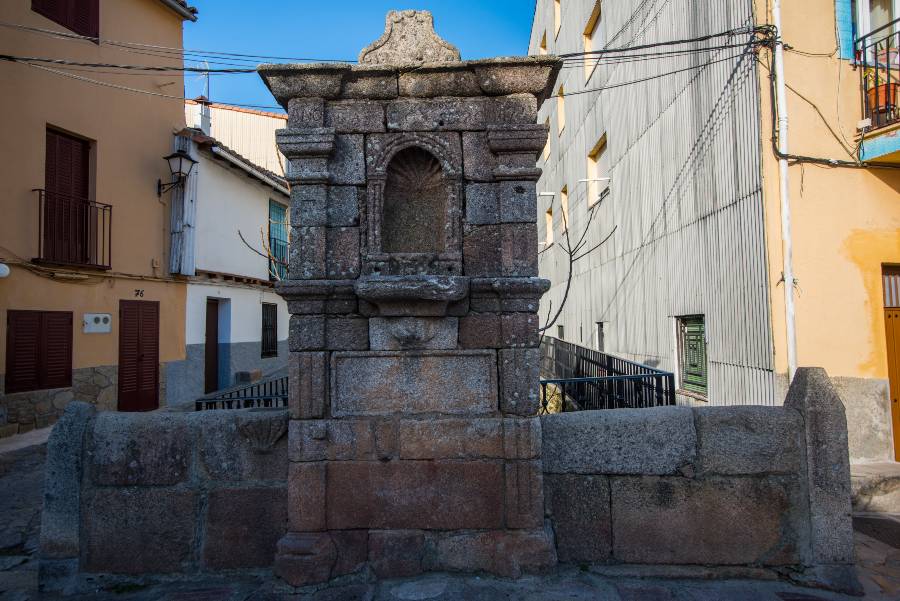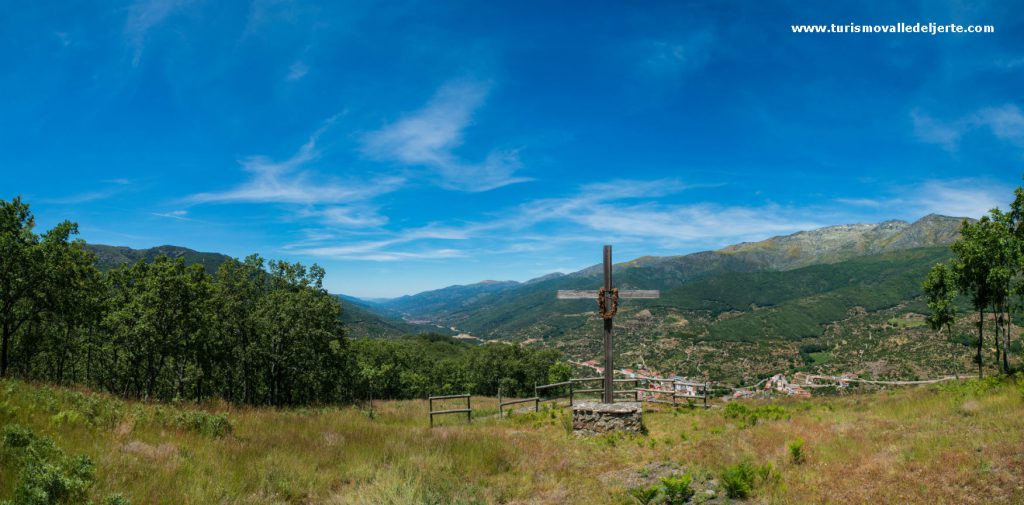POINT OF INTEREST
Cimero Bridge
Jerte River
The Cimero bridge, where we are standing is a medieval remain, one of the first constructions driven by los Álvarez de Toledo after turning it into a village, although the current appearance came from a reform carried out in the first half of the 18th century. Watch the river Jerte go by through the semi-circular arch built on granite blocks.
Carlos V crossed this bridge on entering Tornavacas on 11th November 1556, requesting the locals to fish the rich trout of the river.
The Jerte, the river that gives name to the Valley, starts in the mountains of Tornavacas and even at this point it hasn’t acquired its full river entity, slowly, with its crystal clear waters, it flows calmly in what will be a long journey of 70km through the valley and nearby lands until it reaches Alagón and its Father Tajo.
Located in the mountains of Tornamantos with an altitude of 871m above sea level and covering a surface of 76.6 km2. Its name is related to the legend that attributes to its origins, set in the mid 10th century in a confrontation that took place between Christian troops and Muslims in which the cows, abundant in the area for centuries were the protagonists.
Tornavacas is historically an important place in Upper Extremadura. The first solid and unquestionable written reference that the municipality has is dated to the first half of the 13th century, which shows that the village is the oldest of the entire region of Valle del Jerte. Later it was elevated to the category of Villa.
After the abolition of lordships in the first quarters of the 19th century, the town, already a constitutional municipality within the region of Extremadura, since 1834 was integrated in the Judicial District of Jarandilla, not granted its integration in the party of Plasencia until 1928.
La Villa has been of great importance over the course of the centuries because of its geo-strategic situation. The top of the valley was a privileged location to control the passing from Extremadura to Castilla through el Puerto de Tornavacas.
During the Modern Age (15th century to 17th century) Tornavacas experienced a growth sustained in time, reaching its “golden age” in the first half of the 18th century, economically good times in la Villa thanks to the chestnut trees, livestock (especially goats and cows) and the manufacturing of fabrics. In the second half of the 18th century the economic crisis started caused by the chestnut blight disease. The economy of Tornavacas was depleted, the village dived into a dark time that would drag down the flourishing textile industry and agricultural activity.
The wars of the first decades of the 19th century (Guerra de la Independencia, Primera Guerra Carlista) that had an evident impact on la Villa, that little by little started to recuperate in the middle of the century (highlighting crop diversification and the continued abundance of population growth).
Since the mid 20th century, the monoculture of cherry trees has monopolized the hills of the mountains of Tornavacas being today, the economic foundation of the area.


 Español
Español